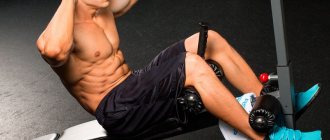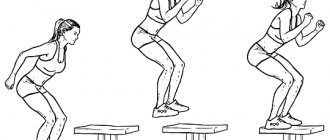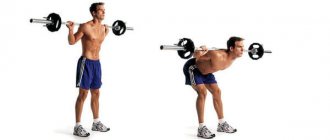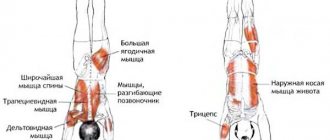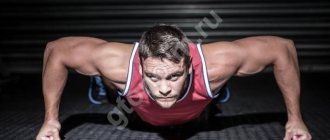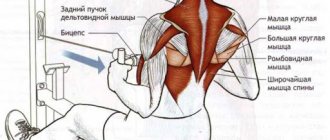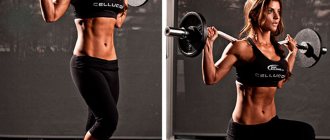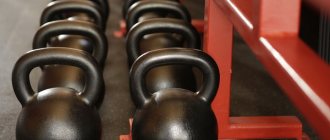Benefits and disadvantages of exercise
Jumping onto a platform is a simple movement that has been inherent in humans throughout evolutionary development. Jumping on a pedestal is used to develop legs. Moreover, they can improve performance in other exercises, such as squats, deadlifts and others.
The main benefits of jumping on a stand:
- Development of explosive leg strength.
- Improved coordination and flexibility.
- Acceleration of muscle contraction.
- Increased endurance.
- The ability to receive a powerful load without the use of weights.
There is only one drawback to jumping onto a stand; it is associated with incorrect technique. In this case, a large load is placed on the spine and knee joints due to compression, which can cause injuries in the future.
Crossfit box jumps
19.07.2019
Hello, dear readers! Today in our article we will talk about a movement that, along with burpees, thrusters and double jumping ropes, is the “calling card” of CrossFit. Can you guess what exercise this is?! That's right, it's jumping on a box or a pedestal, whichever you prefer. Together with you, we will determine the purpose of this movement; What are the goals of an athlete performing jumps? Let's look at the main technical points, as well as the nuances of performing jumps. Let us separately dwell on the execution options both in training and in competitive conditions. Go! Let's start with the fact that box jumps are a key element for developing speed-strength qualities and plyometric abilities of your body. Therefore, we highly recommend including them in your training program at least once a week.
Before starting your workout, you should stretch your Achilles tendons to prevent ankle injuries. So, starting position: we stand at a distance of 30-40 cm in front of the box, our gaze is directed at the landing point, our feet are slightly wider than our shoulders, the center of gravity passes through your heels. We make a short but sharp swing with both hands back, while at the same time slightly tilting the body forward; simultaneously bend your knees, performing approximately ¼ of a classic squat. Then, we sharply swing our arms forward and up, jumping onto the box with a push of both legs. Final position: we stand on the pedestal, pay attention that the heels under no circumstances hang from the edge of the apparatus! The hip and knee joints are straightened, the arms are lowered, the gaze is directed forward - in front of oneself. You can return to the starting position in two ways: jump or step.
The first is more suitable for performing jumps in the “training of the day” or directly at competitions, in this case the load on your lower leg and foot increases, and, of course, the intensity of the execution. With this execution option, be prepared to work “returning” after landing, i.e. immediately, like a spring, cycle repetitions one after another. The second option is preferable for monotonous practice of techniques in protocols like “EMOM”; it is “energy-saving” in nature and is suitable for practitioners who have recently suffered injuries to the lower extremities. Note that it will be advisable to alternate legs when stepping off the stand. Remember that you need to visually control the box throughout the entire movement, both in the first and second cases of returning to the starting position!
Now I need to tell you that in addition to box jumps, there is a variation of box jumps, both touching the projectile and not touching it. The peculiarity in this case will be that when jumping over a box (with a touch), it is not necessary to straighten up on it, i.e. It is permissible to immediately jump/step to the other side of the projectile. Otherwise, the technique does not change, but jumping over a box WITHOUT touching will require a higher level of preparation from you: leg strength, coordination in space and dexterity! At first, the main point here will be overcoming the fear of jumping OVER the curbstone, because... your brain was previously “programmed” for a different task. The problem is solved with the help of mental concentration, tune in to the jump and perform it WITHOUT touching! With the help of such jumps, the “explosive” qualities of the lower extremities significantly increase and coordination develops.
When programming, today's exercise pairs well with squats, lunges, sled pushing, or cycling on ergometers.
What muscles work
When jumping onto a stand, all leg muscles work, although the main load falls on:
- Calf.
- Biceps femoris.
- Quadriceps.
- Gluteal.
Also, when jumping, the muscles of the shoulder girdle, back, and core muscles are partially loaded. The latter are responsible for dampening the inertia from the jump in the body area.
Execution technique
Despite its apparent simplicity, the technique of jumping onto the platform is quite complex. It requires careful mastery and execution of all elements, from the starting position to the final landing on the floor from the stand.
The technique of jumping on a pedestal is divided into three phases:
- Preparing for the jump.
- Direct jumping onto a hill.
- Jumping off the platform.
Preparing for the jump
Mastering the technique of jumping onto a stand begins with practicing the initial position, as well as the correct squat before starting the jump:
- Approach the box at a distance of 1-1.5 feet
- Legs are level with the width of the pelvis, the back is completely straight. The shoulder blades are slightly brought together, the chest is pushed forward.
- The neck is in a neutral position, the gaze is directed forward, at level with the horizon.
Jumping to higher ground
Technique for jumping onto the platform:
- Bend your knees and lean your body forward. When positioned correctly, the knees and hip joints should be bent at right angles. Arms along the body (retracted due to the forward tilt of the body).
- Make the strongest possible push with your feet from the floor and jump onto the pedestal.
- As you jump, move your arms forward to maintain balance. The swing should be sharp and fast.
- Land on your full foot, try to make the contact of the sole with the box soft. To do this, you can bend your knees slightly after landing.
- Straighten up completely and relax your arms.
Jumping off a platform
Jumping to the floor should be soft and easy. Don't tighten your upper body muscles. You need to land with a slight bend in your knees to absorb inertia. If a series of jumps is performed on a hill, the jump to the floor should turn into a squat and then repeat the jump.
Correct technique
- Take dumbbells in your hands. For female beginners, 3-5 kg is suitable, for male beginners - 7-10.
- Straighten up, squeeze your shoulder blades together, slightly arch your back, stand in front of a bench (platform, etc.)
- Place your working leg on the bench with your full or almost full foot.
- Raise your other leg towards your working leg. You can place it next to it on the bench, but it is better not to do this - when the knee joint straightens to the end, this increases the load on it, maintain a small angle in the working leg.
- Lower your non-working leg back to the floor.
Correct technique for men:
And for women:
Recommendations for implementation in training
- Jumping can be integrated into any workout or performed as a separate element.
- Progression is carried out by increasing the number of jumps in the series, as well as increasing the height of the platform.
- Single jumps are used to maximize strength development. With this technique, the deepest squat is used in the starting position.
- In jumping series, you can perform sets by number of repetitions or time.
- It is strictly not recommended to use additional weights (weights, vests, etc.) to increase the load. This will lead to a significant increase in the compression load on the spine and joints.
Stepping onto the platform
Platform steps work your glutes, hamstrings, and quadriceps.
This is a formative exercise for more distinct separation of the thigh muscles. In bodybuilding, stepping onto a platform is used both to increase the volume of the thigh muscles and to work out their definition (a clear separation of the quadriceps, muscles of the back of the thigh and gluteal muscles among themselves). Exercise technique:
- Set up a wide, stable platform or bench at knee level. Stand in front of her at a distance of 15-30 cm. Feet hip-width apart and knees slightly bent. Tighten your stomach and bend your lower back slightly.
- Take dumbbells and hold them at your sides. Experienced athletes can replace dumbbells with a barbell and hold it on their shoulders, as in squats. But do not forget: in both cases the weight should be relatively light.
- Inhale, shift your center of gravity to your right leg, and step onto the platform with your left (working leg).
- Tighten the thigh muscles of your working leg and, resting your entire foot on the bench, push your right leg off the floor and place it against your left leg on the platform. Exhale.
- Inhale and, keeping your left foot on the platform, step your right foot back onto the floor. This is one repetition.
- Perform all reps of the set on the left leg first, then on the right, or alternate legs during the set.
Exercise Tips:
- This exercise is better done with dumbbells than with a barbell, since in the first case the center of gravity is lower, which means it is easier for you to maintain a stable position. With a barbell, it is much more difficult to transfer your center of gravity from one leg to the other, especially when you climb onto the platform (the barbell will “tilt” you onto your side). Therefore, we recommend using a barbell only for experienced athletes. We advise others to master platform steps with dumbbells or without them at all.
- Maintain correct posture throughout the entire set. To do this, be sure to pull your stomach in during the movement (but do not strain it) and do not relax the psoas muscles that hold the S-shaped curve of the spine.
- While performing the exercise, look ahead at all times. Look down at the platform only when you step onto it.
- Be sure to pause before getting on and off the platform to regain your balance. Do not practice pacing at a fast pace! It is very dangerous!
- Increase the working weight only when you learn to perform the exercise without errors. Practice lifts with light dumbbells.
Application of the exercise:
- For: Athletes of average training level.
- When: In the middle of a leg workout. Before stepping onto the platform, perform squats and leg presses. After pacing, practice leg extensions and hamstring exercises (deadlifts and leg curls).
- How much: 2-3 sets of 8-12 repetitions.
Muscle Function: By lifting regularly, you will improve your strength in squats, deadlifts, cleans and snatches. Coordinated work and strength of the hip and knee extensor muscles is extremely important in athletics (high jump and long jump), baseball, basketball, rugby, football and even scuba diving.
Program for progress
For jumping exercises, there are a large number of different programs that are used, depending on the goals, type of sport, experience and training of the athlete. However, there is a general pattern that works equally well for beginners and advanced athletes alike. The program is designed for 2 months with a gradual increase in loads.
| A week | Load |
| 1 | Training of any jumps (jump rope, low stand, etc.); |
| 2 | 2 sets of 5 reps |
| 3 | 3 sets of 4 repetitions |
| 4 | 4 sets of 4 reps |
| 5 | Drawer height increase: 3x5 |
| 6 | 4x4 |
| 7 | 4x5 |
| 8 | Height increase: 3x5 |
Workout Features
As mentioned earlier in the previous article about performing MS in kettlebell lifting in 3 months, the exercise is performed as the first additional one on the day of classical jerk training. Performing jumps after other heavy leg exercises (deadlifts, squats with a barbell on the shoulders) in my opinion leads to a deterioration in coordination, technique and overall power development. I consider the inclusion of this exercise 2 weeks before the competition to be especially necessary to raise the overall tone and activate the nervous system. As for the number of approaches and repetitions, I think it is advisable to perform the exercise in 10 sets of 10 repetitions with a short rest. Or one long approach of 100 repetitions with a gradual reduction in execution time.
I suggest watching a short video on the technique of performing a jump on a pedestal.

